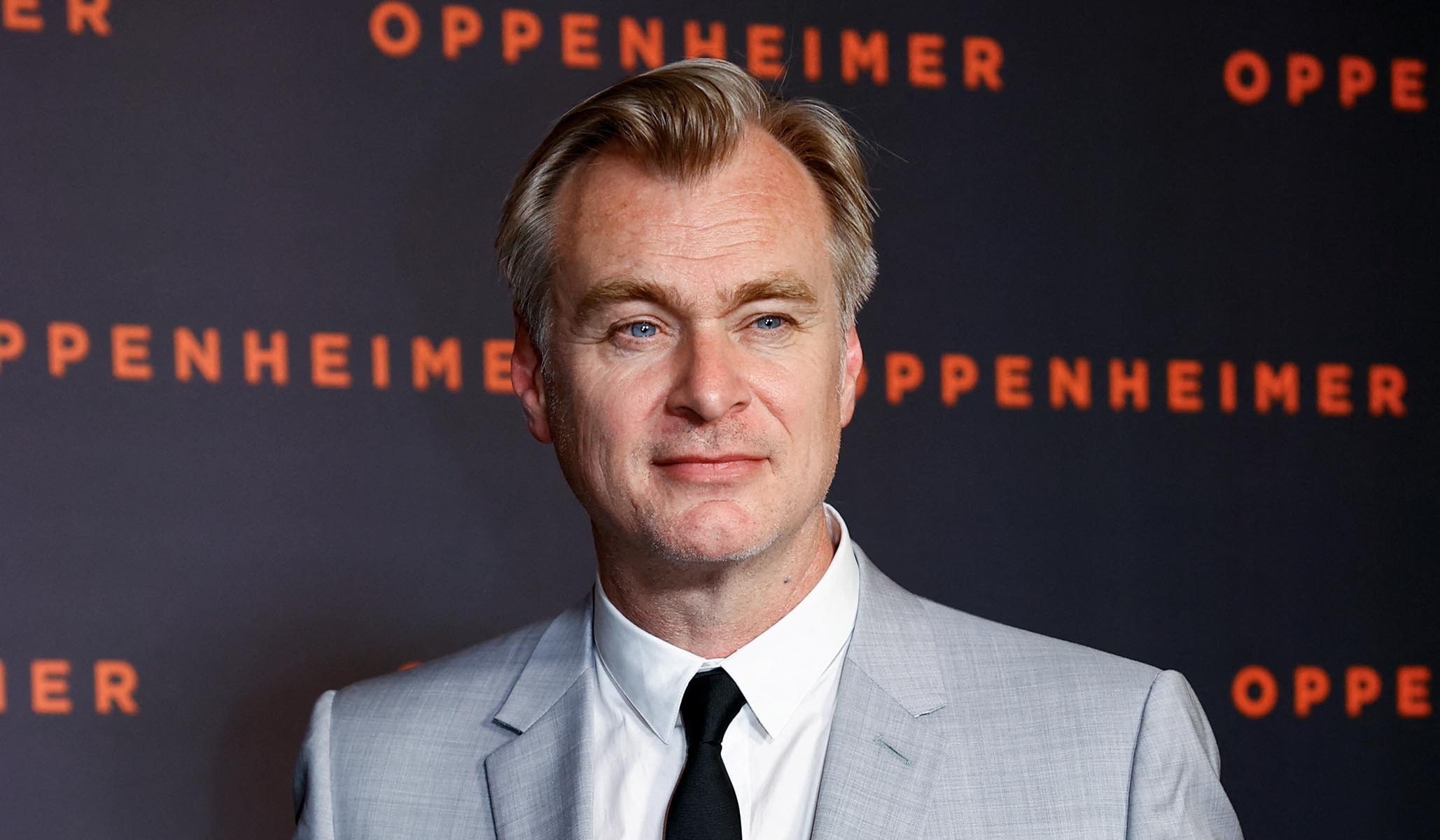


NRPLUS MEMBER ARTICLE ‘I t does not seem possible to bring J. Robert Oppenheimer’s life and character into a clear focus,” began National Review’s 1967 remembrance of the controversial physicist dubbed the “father of the atomic bomb.” About him, “there remains an ambivalence, an aura of mystery and dark magic,” it continued. “What was he truly like? What were the demons that drove him, by the evidence of his haunted face as well as of his tense career, so relentlessly? Trying to answer, we somehow begin to think of art rather than life, but is it Hamlet, Macbeth, Timon, Othello, or Iago?”
What is being described here is a puzzle, and no contemporary film director enjoys a puzzle more than Christopher Nolan. Perhaps this helps explain what attracted the director to the subject and drew him away from the “reality-adjacent” thrillers (Inception, Interstellar, the Dark Knight trilogy) that have been his biggest commercial successes to date. That Nolan is not exactly a typical blockbuster director makes his success so interestingly paradoxical: His films are relentlessly and uncompromisingly his own, cerebral, sometimes labored, and demanding of close attention. Yet filmgoers flock to them, as they will to Oppenheimer, a three-hour biopic about a theoretical physicist.
And in this case, they’ll be right to. Oppenheimer is an ambitious work even for Nolan, who also wrote the screenplay, based on the Oppenheimer biography American Prometheus. It covers the breadth of its subject’s professional career, from his days as a physics student through his spearheading of America’s development of the first atomic bombs to a tumultuous post-war life marked by deeply mixed feelings about what he had unleashed.
At the center of it all is frequent Nolan collaborator Cillian Murphy, whose portrayal of the title character goes far deeper than period garb and authentic syntax. Murphy gamely attempts to solve the Oppenheimer puzzle, showing a man of immense genius, compassion, and contemplation, but also titanic self-regard, dissipation, and carelessness. Oppenheimer may end up tilting toward its subject, whose life remains disputed. Already the film seems to have revived old debates about Oppenheimer’s post-war behavior (of which National Review was skeptical) and about the morality of bombing Japan. But it is hardly a hagiography, and does not settle these questions. The man in full is as realized as is probably possible in the medium of film.
Murphy’s is not the only performance that brings Oppenheimer to life. Many of the most striking performances from the supporting players are of Oppenheimer foils or outright nemeses. Army Corps of Engineers officer Leslie Groves (Matt Damon) makes for a gruff and ultimately friendly contrast to Oppenheimer’s tortured theorizing; Damon plays him well as straightforward and practical in his efforts to bring the bomb to life, complementing Oppenheimer’s theoretical affect. Peer scientists Ernest Lawrence (Josh Hartnett) and Edward Teller (Benny Safdie) clash over political eccentricities and dueling theories. And bureaucrat Lewis Strauss (Robert Downey Jr., finally and mercifully rescued from comic-book land and once again permitted to demonstrate his ability to act), embodies political ambition. It is a truly ensemble cast — even Gary Oldman shows up in a brief but essential role I can’t bring myself to spoil — so much so that it can occasionally become bewildering, especially in combination with some of the story’s other elements.
Because it wouldn’t be a Nolan movie if all of this were conveyed straightforwardly, Oppenheimer’s life unfolds in the context of two separate bureaucratic proceedings: a closed-door hearing concerning the renewal of Oppenheimer’s security clearance in 1954 (dwelling largely on his connections to active Communists, which the film does not downplay), and a hearing concerning Strauss’s nomination as secretary of commerce in 1959. Both proceedings sketch out Oppenheimer’s life, but each does so from a different perspective, with one shown in color and the other in black and white. These dueling perspectives clash cleverly with each other, with one scene shown near the film’s beginning and near its end helping to illustrate why such a storytelling device was employed in the first place.
As is often the case with Nolan (especially in Tenet, his previous film), the artifice can sometimes overpower the story. In Oppenheimer, it induces a slow start. The focus on Oppenheimer himself can also be said to shortchange certain of the more exciting and intellectually engaging possibilities of the period depicted, as Phil Klein argued. (I share Phil’s complaint about a strange reference to JFK but not his gripe about the scenes featuring Einstein.) Some less favorable thematic terrain for Nolan — namely, romance — is handled somewhat clumsily, hewing to the “dead-woman trauma” trope so strangely common in his films. And for a director so keen on demanding an audience’s full attention, Nolan employs more quick cuts within scenes than I would like. But these are relatively minor quibbles.
Oppenheimer is the movie Nolan was born to make and has been preparing to make for much of his career. The temporal games of previous efforts (Memento, Tenet) here make Oppenheimer’s triumphs inextricable from his later life, approximating how he felt about them. Dunkirk’s foray into history prepared Nolan to escape the fictional worlds he so carefully constructs and to depict lived reality. And the practical pyrotechnics of his blockbusters, especially The Dark Knight and The Dark Knight Rises, anticipated but are far outclassed by the Trinity nuclear test depicted here. It is on one level a simple yet skillful demonstration of tension and release, and on another an awe-inspiring moment unlike anything else I’ve ever seen in a theater. In Oppenheimer, Nolan draws from his past and transcends it, reaching a new level of filmmaking — and bringing J. Robert Oppenheimer’s life clearly into focus.
